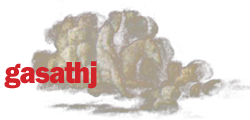The aims of Generative Design teaching activity are:
1. Increasing the quality of Design acts.
2. Supporting the construction for each student of their own Design Style and Identity, identifying and constructing the “characters” of their own recognizable approach to Design
3. Defining advanced theoretical and operative skills for increasing the Design quality by a deep real experimentation.
4. Helping to identify and select their own Design imaginary in a way able to be directly used in each Design process.
5. Experimenting the advanced Generative approaches to Design using technologies able to move the design act from Forms to Processes, from static solutions to a dynamic operative vision of a possible future by performing a world of variations of recognizable events.
Generative Design is a morphogenetic process using algorithms structured as not-linear systems for endless unique and un-repeatable results performed by an idea-code, as in Nature. (C.Soddu 1992)
Teaching structure
Each student will be asked to:
1. identify his/her own reference imaginary
2. identify his/own design vision, focusing the characters of this vision.
3. perform, starting from this imaginary, his/her own design process codes (advanced generative scripts) able to be directly used into a design act and able to fit own design vision.
4. experiment this operative process in several design exercises results, one each month, with the aim to sharpen the quality, identity and recognizability of each design acts.
Following the methodology fixed in our books - http://www.generativeart.com/bookshop - this article shows the experience of the generative design approach with the students from all the world at the Master School of Design of Politecnico di Milano University.
The starting point for each student is to engage a process by using the trilogy Memory/Thinking/Imagination for performing the main aim of the generative process as a character.
This trilogy works following an helical direction in double verse. The generative character is discovered by fixing 3 words as attributes, also in contrast between them in significance. In this way the character performs an instability of the system delineating a first not linearity. Students choose attributes from an imaginary world of singular reference.
It is activated in the generative process a dualism, as Goethe fixed in Polaritat, 1805, that gains students in working in a transformation process of elements. These are connected imaginatively with attributes.
The next step is the core of the process. Using a catalyst (images, sounds, poems etc.) each student interprets it by a process of abduction (Pierce) able to catch the impression fixing it in a first sketch as an embryo of a performing idea/code. In this first hypothesis are fixed the aim/attributes. So students have just delineated a paradigm/code able to perform a control act in the generative results. As in nature code works.
So is a deductive moment. It refers to the incipit of Beowulf by Seamus Heaney; that is the translation of the epic English romance after one thousand of years. This for the simple reason that we can use the word generative in a correct way only if we are connected to the past time, as the great poet Heaney gave us a so incredible example. Putting the fixed characters in the first idea structured as an embryo of paradigm is like to translate the past (catalyst) into a new configuration performed as generative chain. These are expressed by choosing from singular cultural references a motto, as expression of a popular voice in mother tongue.
The first part of the works of students (they stay in the middle of course) is shown in GA exhibition in vertical format A4 as fragments connected each to the others in evocation of the old film material in our digital time.
Chintia Avila
Giulia Baldassari
Bjarte A Misund
Camila Lichtenauer
Carolina Nishino
Alice Casiraghi
Claudia Ferrer Puchalt
Jacobsen Hasan
Eivind Prestholt
Luca Ferrario
Giulia Formica
Daniele Gatto
Matteo Giussani
Hu ZHIYUAN
KARIMIPOUR Katayoon
Aleksandra Kozawska
Leonidha Ikonomi
Linda Bowman
Luca GAVERINA
Nicole Leonardi
Pam Verhoef
Rodolfo Riva
Marco Saporiti
Daniel Soares
Sofia PANTELAIOU
Soyoung Hong
Tayseir Fathia
Theodor Henriksen
Zhong WANPING
Ziiwon Kang
